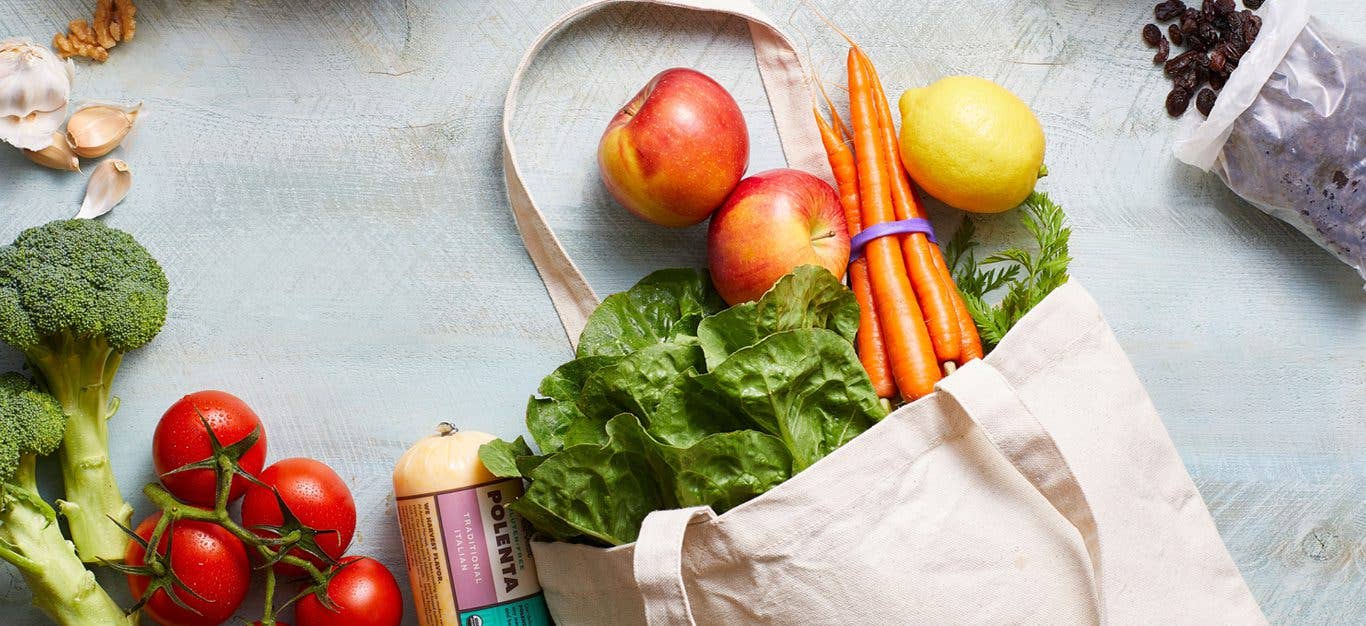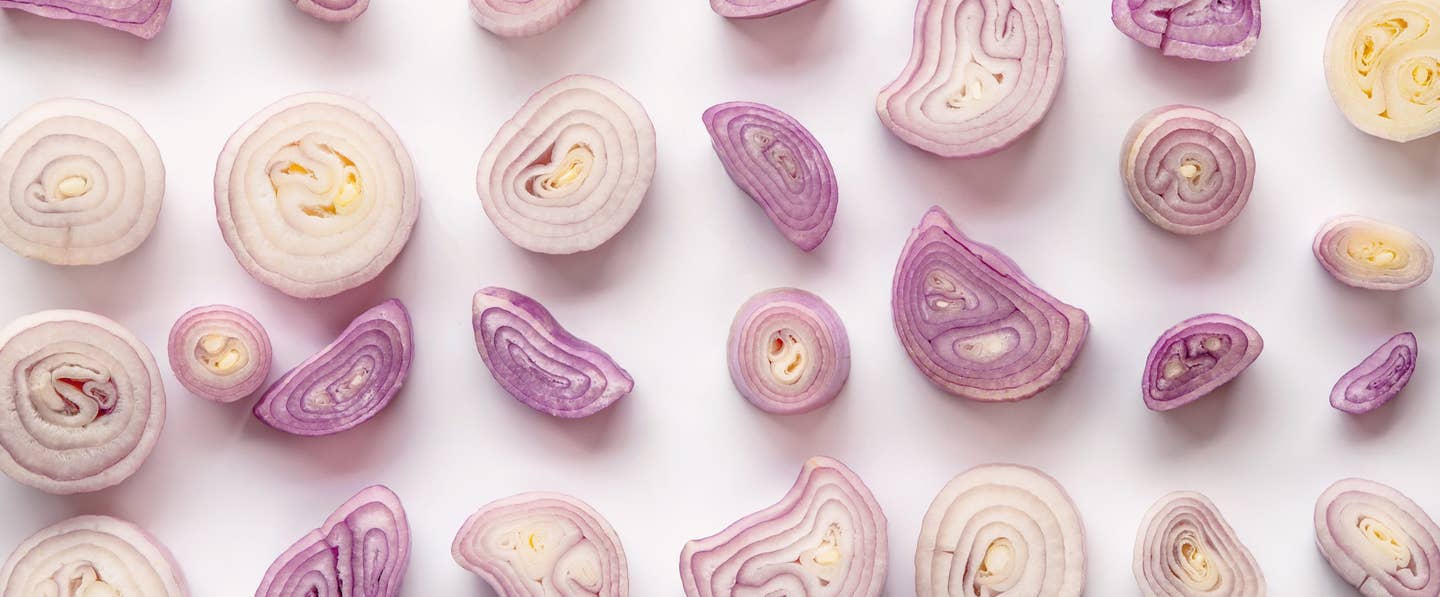It’s hard to imagine a world without onions. The pungent members of the allium family (which also includes shallots, leeks, garlic, and chives) have been cultivated for over 5,000 years and remain staple ingredients in every cuisine around the globe. Onions may look humble, but they have superpowers in the kitchen, with the ability to lift, deepen, or intensify the flavors of any dish they are added to. Read on to learn about the most common types of onions, how to slice and dice like a pro (and not cry in the process), and recipes to try.
The 6 Most Common Types of Onions
Many recipes call for a specific type of onion because each has a slightly different flavor profile. That said, most onion varieties can be used interchangeably.
Yellow/Brown Onions
Almost 90% of the onions grown in the United States are yellow onion varieties. They’re sometimes called brown onions because of their brown, papery skin. Juicy and pungent when raw, yellow/brown onions turn nutty and sweet when cooked.
Selection Choose yellow onions with dry, papery skins and no signs of mold. Give them a gentle squeeze to check for soft spots or bruising.
White Onions
White onions are the onions of choice in Latin American cuisines because of their crunch and clean finish. They are also a good option for pasta salads, potato salads, and grain salads.
Selection White onions’ thin skin makes them easy to check for softening or bruising but also makes them more prone to cuts and dehydration. Select unblemished white onions that look and feel firm.
Red/Purple Onions
Mild and sweet, red onions are a natural choice for any recipe that calls for raw onions. They also make stunning pickles. Keep in mind that when cooked, red onions can muddy the colors of soups and grain dishes (though the flavor will be fine).
Selection Check to make sure red onions’ skins are intact and their stem tips show no signs of sprouting.
Sweet Onions
Now available year-round, sweet onion varieties such as Vidalia, Walla Walla, and Maui were once highly sought after right after their harvest in late spring and early summer. The higher sugar content of sweet onions makes them excellent options for salads, salsas, and grilling.
Selection Sweet onion varieties are more perishable than yellow or white onions, so give them a quick sniff before buying. Whole sweet onions should not give off any onion-y scent before they’re sliced.
Green Onions/Scallions/Spring Onions
Green onions and scallions are two names for the same thing: bulb-less onion varieties that are harvested while the stems are still firm and the flavor is extra-mild. Spring onions have larger, bulbous ends and a more pronounced flavor.
Selection Choose bunches that are bright and firm that look dry (not slimy) with no signs of browning on the tips or root ends.
Pearl Onions/Baby Onions/Cipollini
Marble-sized pearl or baby onions are miniature varieties that add flavor and texture to pickles, kabobs, stews, and roasted or simmered veggie medleys. Cipollini onions are a slightly larger Italian variety with flat stem and root ends. Both pearl onions and cipollinis make an appearance on holiday tables in creamed side dishes and casseroles, which is one reason it’s easier to find them in the fall.
Selection Give bags of pearl onions a shake to check the state of the little orbs inside. They should be moisture-free and firm with thin skins.
Heirloom Onions
Heirloom onions are worth seeking out at farmers markets for their subtle, complex flavors, gorgeous colors, and generous size! The Ailsa Craig, one of the most popular heirloom onions, can weigh up to five pounds.
Onion Storage
Like other root vegetables, onions do best in cool, dark, dry places with good air circulation. A closed cupboard or a kitchen drawer is the best places to store onions for later use. Onions you plan to use in a few days can be stored on a kitchen counter. Avoid refrigerating onions or placing them in plastic bags, which can trap moisture.
Halved, sliced, and chopped onions will keep up to a week in a sealed container in the fridge. Sliced and chopped onions can also be frozen for future use in recipes.
Green onions (aka scallions) and spring onions should be wrapped in a damp paper towel and refrigerated to keep their green stems firm and fresh.
How to Peel an Onion
- Trim the hairy roots from the root end without removing the base of the root. (Leaving the end intact holds the onion’s layers together and makes it easier to work with.)
- Slice off just enough of the papery onion top to reveal the juicy rings beneath.
- If you’re slicing, dicing, or cutting the onion into wedges, halve it lengthwise. (Halving it first makes it easier to peel.)
- Use a paring knife to loosen and lift the dry skin layers from the tip of the trimmed onion. Keep using the paring knife to help you grip the skin with your thumb as you pull them away.
4 Ways to Cut an Onion
Rings
Peel a whole onion; then cut a thin slice from one side to create a flat base to prevent it from rolling around on the cutting board. Set the onion sliced side down. Cut crosswise into rings, working from the stem end to the root end.
Wedges
Place a halved and peeled onion flat side down on a cutting board. Cut it in half lengthwise. Then cut each half lengthwise once more. The intact root end should hold the wedges together.
Slice
Place halved peeled onion half on the cutting board and slice to desired thickness, working from the stem end to the root end.
Dice
Place a peeled onion half cut side down on the cutting board and make even lengthwise cuts without slicing through the stem. (Do not remove the stem; it will hold the layers together while cutting.) Place your hand flat on top of the onion to secure it; then cut two or three horizontal slices through the middle. Slice the onion from stem end to root end to release the dice.
3 Ways Not to Cry When Slicing Onions
When onions are cut, their cells are crushed and release irritant sulfur compounds into the air that can make you tear up. Here are three ways to cut down on the crying factor.
- Use a sharp knife. A sharp blade will slice cleanly through onion cells with less crushing action, which means fewer irritants released into the air.
- Take ’em outside, or work by an open window. The circulating air helps move the volatile compounds away from the work area more quickly.
- Keep the root intact. Because the sulfur compounds are primarily concentrated in the root area of the onion, keeping the root end intact while slicing or chopping cuts down on their release.
3 Quick Fixes for Pungent Raw Onions
Need to tame the bite of a chopped or sliced raw onion? Here’s how.
- Soak for 15 minutes in cold water. The water helps dilute and drain away some of the sulfur compounds.
- Marinate with citrus or vinegar to neutralize onion-y flavor.
- Add parsley. The grassy-flavored herb is also recommended for eliminating onion breath!
Recipes to Try
Onions take center stage in these healthy plant-based recipes from Forks Over Knives.
- Red Onion and Charred Cauliflower Tacos
- Sun-Dried Tomato and Caramelized-Onion Focaccia
- Skillet Green Beans with Caramelized Onions and Mushrooms
- Mediterranean Style Pita Pizzas with Quick-Pickled Onions
- Potato-Onion Pizza
- Potato and Onion Bake with Rosemary and Tomatoes
- Caramelized Onion and Pepper Vegan Quesadillas
For more guidance in healthy cooking, check out Forks Meal Planner, FOK’s easy weekly meal-planning tool to keep you on a plant-based path. To learn more about a whole-food, plant-based diet, visit our Plant-Based Primer.
Related News
Try Our Top-RatedMeal Planner Free

Forks Meal Planner takes the hard work out of making nutritious meals the whole family will enjoy.
SAVE $200 ON OUR ULTIMATE COURSE

Join our best-selling course at a new lower price!





